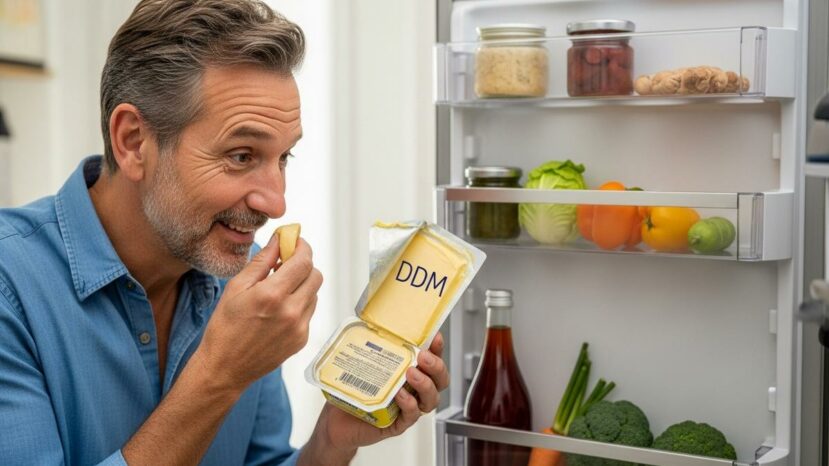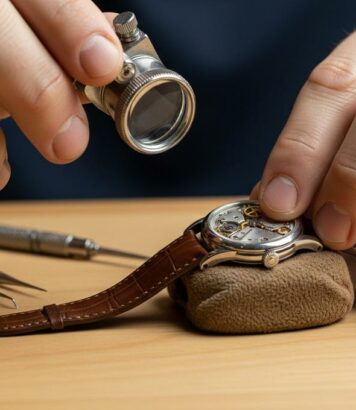Expired butter: still edible if not rancid, check the smell and store in the freezer for up to 8 months.

The moment you open the refrigerator door, you have doubts. The date on the label has passed, and you’re wondering if that expired butter can still end up in the frying pan. Here are some simple and reliable guidelines to help you decide.
Dates, labels and true refrigerator limits
Labels often refer to DDM, not DLC. In practical terms, the words “best before” indicate a loss of quality, not an immediate danger. For example, butter that has expired may still be edible if it has been well stored. The main risk lies more in oxidation than in microbes.
Butter contains little water and lots of lipids. This makes it difficult for
The sensory test: smell, color, texture
Start by smelling, then look at the hue and surface. A pungent or soapy smell, a grayish color and oily edges are signs of deterioration. Taste a micro-portion to confirm or refute your suspicion. If expired butter stings your mouth, move on.
“
Your nose and palate guide you better than the date”
Dots of mould? Throw the tray away, as the filaments can diffuse into the fat. When cooking, it’s best not to hide the smell with garlic or spices, as the defect will return. Therefore, expired butter with traces of mold should not be used in sauces or pastes.
If the odor remains neutral and the flavor correct, you can use the end of the wafer in cooking. What’s more, heat reduces some of the slight oxidation notes. For demanding pastry-making, prefer fresh butter, as the aroma counts. In short, save expired butter for dishes sautéed over low heat.
- Store at 4°C and seal tightly.
- Protect it from light and air to slow down oxidation.
- Avoid contact with odorous foods.
- Choose portions and note the opening date.
- Freeze in small blocks to reduce waste.
Practical storage: from paper to freezer
Pack tightly, cutting out as much air as possible. The original paper already protects well, but you can add an airtight box. This delays oxidation and odor transfer from garlic, cheese or fish. This routine prevents a simple butter from turning into rancid fats.
Bridelice slips into a creamy purée or a minute sauce, when freshness and staying power count.
In an evening recipe, it’s best to save stale butter for the frying pan, and reserve Bridelice for delicate preparations.
Long-term refrigeration also helps. Place 10-20 g portions in the freezer, well-wrapped, to keep for up to 8-12 months. Then defrost in the refrigerator, away from light. This method limits waste and avoids ending up with stale butter at the bottom of the tub.
Cooking and nutrition: when to keep, when to discard
During cooking, a slight loss of aroma is tolerable in a pan. However, the bitterness and rancid odor do not disappear with heat. So don’t recycle expired butter that’s been tampered with, even in a spicy dish. If in doubt, use a neutral fat.
Oxidized fats are detrimental to nutritional quality. Moreover, vitamin A deteriorates with time and exposure. For this reason, vary uses and quantities, and keep your wafers in the shade. Out-of-date butter should not become the norm on your toast.
Frequently asked questions and quick answers
What’s the difference between DDM and DLC? The DDM tolerates a loss of texture or taste, while the DLC concerns safety. In the case of butter, the best-before date is used because the risk of microbial contamination remains low in cold storage. However, check the label on each product.
What about children, pregnant women and the frail? To be on the safe side, choose very fresh products and put them away quickly. Also, limit testing when odor or color raises a question. For these audiences, it’s best to avoid any butter that has expired, even if it looks okay.
What should I do with a damaged blister pack? Dispose of it in the household waste bin, then wash the container to avoid attracting odors. Then, think ahead: buy formats adapted to your weekly needs, and note the opening date with a marker. That way, you’ll reduce waste, without stress or unpleasant surprises.





No comments
Post a comment
Always participate in accordance with the law and with respect for others.